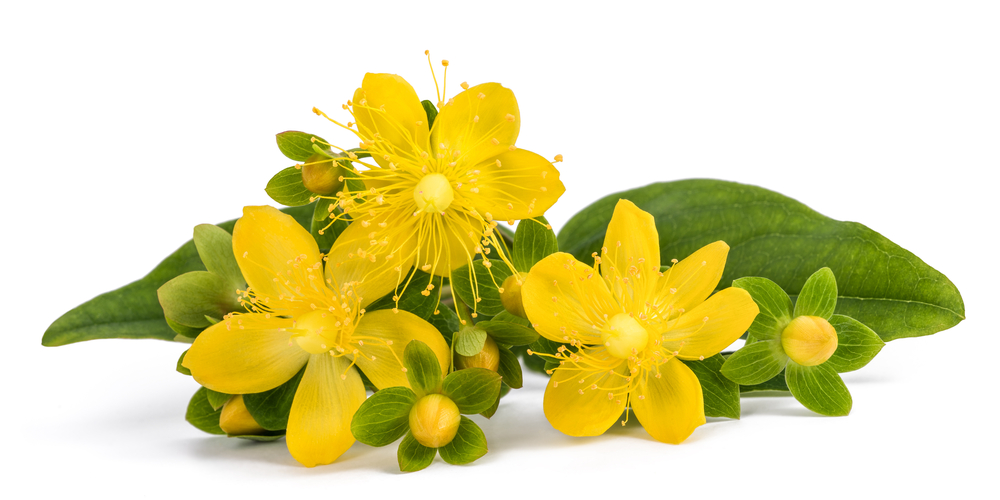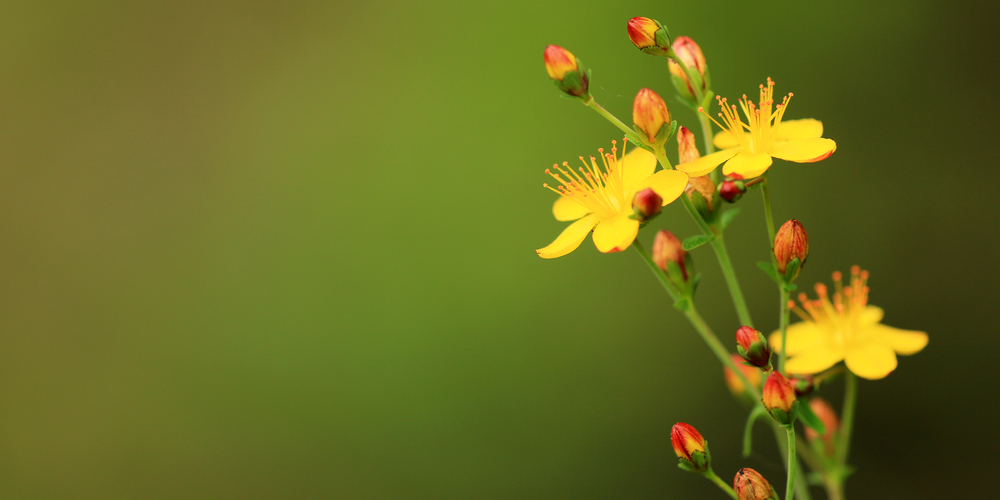Hypericum calycinum, or otherwise known as St. John’s Wort is a fast-spreading shrub with oval leaves and a profusion of yellow flowers. The perennial plant is great as ground cover and can reach 24 inches in height. Let’s look at Aaron’s Beard plant care.

| Botanical Name | Hypericum calycinum |
| Common Name | St. John’s Wort, Aaron’s Beard, Rose of Sharon |
| Plant Type | Perennial |
| Flower Color | Bright yellow flowers around 3 inches wide |
| Size When Mature | 24 inches |
| Bloom Time | Mid-summer to fall |
| Sun Requirements | Full sun to part shade |
| USDA Hardiness Zones | 5 to 9 |
| Soil PH Range | Neutral, Alkaline, Acid |
| Soil Type | Sandy, well-drained |
| Water Needs | Medium |
| Native Area | Southwest Asia and Southern Europe |
What you Need to Know About Aaron’s Beard
Hypericum calycinum is known as the Rose of Sharon and hardy in USDA zones 5 through 9. Dark green oval leaves give way to an abundance of bright yellow flowers that bloom from summer to fall. Aaron’s Beard is easy to grow and it thrives under full sun or partial shade
The plant occasionally produces small red or blackberries that shouldn’t be eaten.
How to Care for Aaron’s Beard
Here’s everything you need to know about growing and caring for a thriving Hypericum calycinum
Light
St. John’s Wort isn’t too particular about the intensity of light it gets, and will happily grow and spread in full sun to partial shade. The plant can adapt to heavy shade while under trees and is vigorous enough to overtake neighboring plants.
The best use for Aaron’s Beard is massed and to cover the ground, in edges or slopes, embankments, and border fronts or rock gardens. The more light it gets the faster it grows and the more blooms the semi-evergreen shrub produces.
Water and Soil Needs
Aaron’s Beard can grow in any soil type and pH, but it prefers a well-drained medium that’s constantly moist.
You can use a garden mix or potting soil, but for the best results, it’s recommended that you use a sandy medium that drains well. St. John’s Wort can tolerate any pH, be it alkaline, acidic, or neutral as long as it’s getting enough water and nutrients.
Aaron’s Beard is somewhat drought tolerant but you shouldn’t let the soil completely dry out, even when it’s established.
Temperature Requirements
Aaron’s Beard grows well in USDA zones 5 to 9 and acts as either evergreen or deciduous depending on the climate.
In warmer areas, you can expect St. John’s Wort to assume an evergreen state. However, in colder regions hypericum calycinum usually dies back to the ground but grows right back up with new stems and leaves in spring.
Fertilizer
The best fertilizers to use on an Aaron’s Beard plant are mineral fertilizers and organic compost.
St. John’s Wort isn’t a heavy feeder, fertilizer-wise, and can usually grow quickly with little to no application. However, if you want the plant to spread quickly and produce more yellow blooms in the summer and fall, then you can give your hypericum calycinum mineral fertilizer once a month. Organic compost also works well in this regard.
Hypericum calycinum benefits from other fertilizer types as well, including liquid, slow-release, or granular solutions. Make sure to follow the instructions on the label and feed only every month or so.
Common Diseases
Aaron’s Beard is fairly pest and disease resistant, but the plant may be afflicted with rust in constantly-wet conditions.
Rust is characterized by small spots of yellow, red, or brown on leaf surfaces and may appear in early summer or spring. These spores create ‘fruits’ of orange powder on the underside of the foliage and turn the affected leaves yellow or brown until it dies.
The best solution against rust is a fungicide that’s made to combat the disease. You can easily purchase them in gardening stores and on the internet. The application should be followed according to the manufacturer’s instructions for the best results.
In the meantime, it’s recommended that you remove the leaves that are affected by rust and dispose of them properly. Collect leaf debris and infected plant matter as well to prevent the disease from spreading.
To prevent rust disease you should not water directly overhead and wet the leaves. It’s also best to mow or prune back the shrub when the weather is dry to encourage rust-free foliage.
Aaron’s Beard Propagation
Aaron’s Beard will readily multiply using two propagation methods- dividing the shrub and taking stem cuttings.
First, you’ll have to identify which type of Hypericum calycinum you have. Perennial species are best propagated in spring using softwood cuttings, while the shrubby species are best propagated in summer via semi-hardwood cuttings.
Prepare a container that has sterile soil and place the cuttings about an inch or two deep. Keep the soil relatively moist and the cuttings in a brightly lit and shaded area. The cuttings should root in about two to four weeks.
Aaron’s Beard can also be propagated through division, which is best done in early spring and as the plant awakes from dormancy. Dig it up, then divide the root ball equally and enough to fill a small pot. Add some soil and place in light shade, and water only when the top inch of the soil is dry.
Related Article: Growing St. Johns Wort From Seed

